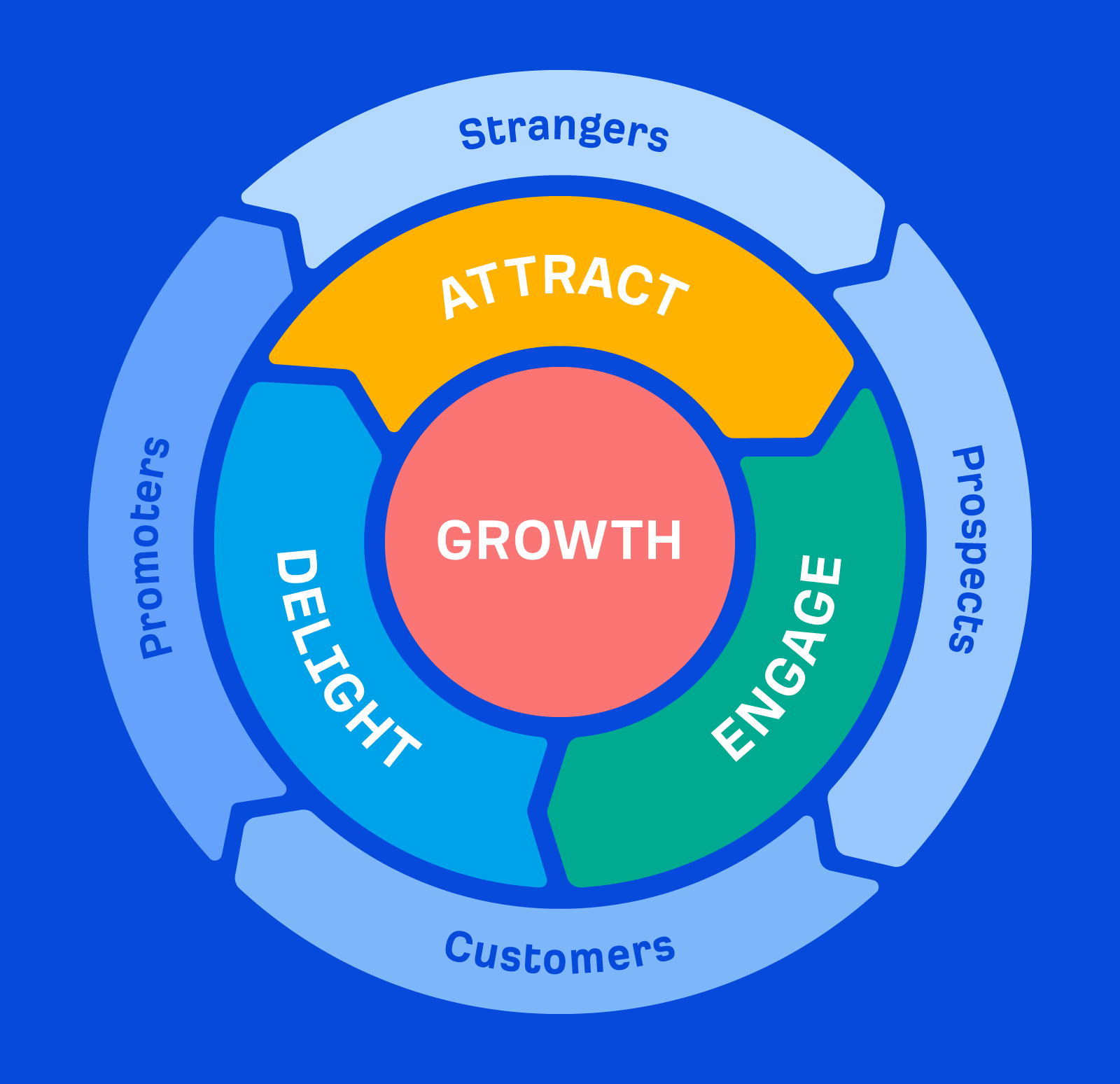Coined by HubSpot’s founders Brian Halligan and Dharmesh Shah, the goal of inbound marketing is creating content to:
- Attract potential customers.
- Engage and teach how your product or service can solve their problem.
- Delight by going above and beyond to help them find success with your product.
Together, they work like a flywheel.

How to do inbound marketing
Inbound marketing is our core marketing strategy at Ahrefs. We create helpful content that teaches our customers SEO and digital marketing while promoting our product, exactly like the post you’re reading now.
Here’s how we use inbound marketing at Ahrefs:
Attract
Ranking in organic search is the main way we attract potential customers. We chose this channel for two reasons:
- Consistent traffic – By ranking for topics people search for, we can attract traffic to our content month after month.
- Highly targeted – By writing about the problems our product helps to solve, we attract the right people at the right time.
For example, we rank #1 for “how to do affiliate marketing”:

According to Google Search Console, this post has attracted 58,000 clicks over the past three months:

All of these people are potential customers because they’ll struggle to do affiliate marketing without a keyword research tool like Ahrefs.
To find the best topics to write about, we do keyword research. Here’s the process:
- Go to Ahrefs’ Keywords Explorer
- Enter a term relevant to your business or product
- Go to the Matching terms report

This report shows you all the keywords containing the topic, sorted by popularity.
Go through the report and pick out those that have business potential. Business potential is essentially how easy it is to pitch your product while tackling a topic.

Give those keywords a score from 0 to 3 and prioritize targeting those that are “2” or higher. Then, follow the resources below to create content that’ll rank for those keywords.
- Content Writing for SEO: How to Create Content that Ranks in Google
- SEO Content: The Beginner’s Guide
Engage
Engagement is all about teaching readers how to solve their problems using your product. To do this, you need to understand their problem and help them solve it.
For example, a searcher wants to know how to find who links to their website. They search on Google and find our content. Guess what? Our product—Site Explorer—solves that problem. So we include it as a potential tool they can use in our article.

In fact, this article is doing the same thing too—we’re showing you how to do inbound marketing our way, which is SEO. And you’ll need a tool like ours to do that.
Understand that this is not forced. Our product is the best way to solve that problem, so it’s naturally part of the narrative. If it doesn’t fit, we never include it:

That’s why prioritizing topics with business potential in the Attract stage is so important. If your product isn’t a good solution to the problem, it’ll be hard to “sell” it in the content and engage readers in a meaningful way.
Delight
Each delighted customer can spread the word to their friends and colleagues. This gets you more customers, who can then refer more people. But the flywheel only moves if you excel in this stage—delighting your customers.
You can’t put lipstick on a pig. So no number of “delighting strategies” you use can make your customers happy if you don’t have a product or service that delivers results. Indeed, that’s our main focus. We’re always trying to improve our product and constantly releasing new features:
But new features mean nothing if your customers don’t know how to use them. You have to help them use those features and achieve the results they want. That’s what we do on our blog.
Beyond that, our “help” section is available for our customers if they have any specific questions regarding our tools.

Each new customer is also invited to join our customer-only community:

If they have any feedback or ideas for features they want developed, they can discuss them in the community or even submit them on Canny, our feature request board:

FAQs
Here are some commonly asked questions about inbound marketing.
What are the benefits of inbound marketing?
Inbound marketing attracts potential customers, teaches them how to solve their problems with your product, and helps customers get the most out of your product. This results in happy customers who recommend your product to others.
What is the difference between inbound and outbound marketing?
Outbound marketing is an interruptive form of marketing where you push a message or product to a prospect through cold calls, cold emails, direct mails, etc.
Inbound marketing is the opposite—you create useful content for your audience that they seek out when they need it.
Final thoughts
Our specific product, the customers we serve, and the industry we work in have informed the direction of our inbound marketing strategy.
Your company is likely in a different industry, targets different customers, and has different resources. The principles of inbound marketing will be the same, but the individual tactics will be different.
Did I miss out on anything important? Let me know on X (Twitter).



